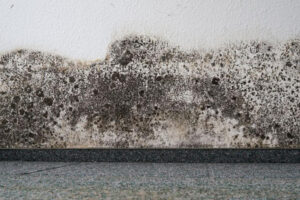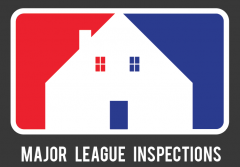
Assessing the Mold Situation
Thorough Inspection and Moisture Evaluation
The first crucial step in mold remediation is a thorough assessment of the affected area. Experienced professionals will conduct a detailed inspection, identifying the extent of the mold growth and determining the underlying moisture sources that are fueling the problem. Using specialized equipment, they will survey the area, collect air and surface samples, and evaluate moisture levels to gain a comprehensive understanding of the situation.
Identifying the Mold Type
Mold comes in various forms, and each type requires a tailored approach to remediation. During the assessment, the experts will identify the specific mold species present, as this information is essential for developing an effective plan of action. From allergenic molds to highly toxic varieties like Stachybotrys chartarum (commonly known as black mold), the remediation strategy will be adapted to address the unique characteristics of the fungal growth.
Developing a Remediation Plan
Armed with the insights gathered during the assessment, the mold remediation professionals will devise a detailed plan to address the problem. This plan will outline the specific steps to be taken, the equipment and techniques to be employed, and the timeline for the entire process. By considering factors such as the extent of the contamination, the affected materials, and the potential health risks, the experts will ensure that the remediation is carried out effectively and safely.
Preparing for Mold Remediation
Addressing the Moisture Source
Before the actual remediation process can begin, it is crucial to address the underlying moisture issue that is fueling the mold growth. Professionals will work to identify and rectify the source of the moisture, whether it’s a plumbing leak, inadequate ventilation, or a structural problem. Resolving the moisture problem is essential, as it prevents the mold from recurring even after the initial remediation.
Isolating the Affected Area
To prevent the spread of mold spores during the remediation process, the affected area must be thoroughly isolated. Remediation experts will use physical barriers, such as plastic sheeting, and negative air pressure systems to contain the contaminated zone. This ensures that mold spores do not escape and contaminate other parts of the building, safeguarding the health and safety of the occupants.
Protecting the Remediation Team
Mold remediation can be a hazardous task, as exposure to mold spores can lead to various health issues. To ensure the safety of the remediation team, they will don personal protective equipment (PPE), including respirators, goggles, and protective clothing. This specialized gear helps to shield the workers from potential exposure and minimize the risk of inadvertently spreading mold spores to unaffected areas.
The Mold Remediation Process
Removal of Damaged Materials
One of the key steps in mold remediation is the removal of any porous materials that have been significantly affected by mold growth. This includes items such as carpeting, drywall, insulation, and fabric-covered furniture. These materials are carefully bagged and sealed to prevent the release of mold spores, and they are then disposed of according to local regulations.
Cleaning and Disinfecting Surfaces
After the removal of damaged materials, the remediation team will focus on cleaning and disinfecting the affected surfaces. They will use specialized cleaning solutions and techniques, such as HEPA vacuuming and wet wiping, to eliminate mold growth and prevent its recurrence. This process ensures that any remaining mold spores are neutralized and removed, leaving the surfaces clean and ready for the next stage of the remediation.
Applying Antimicrobial Treatments
To further safeguard the remediated area, the professionals will apply EPA-registered antimicrobial treatments. These specialized solutions are designed to kill any remaining mold spores and prevent future growth. The application of these treatments helps to create an inhospitable environment for mold, ensuring that the problem does not resurface after the initial remediation.
Encapsulation and Sealing
Once the affected surfaces have been thoroughly cleaned and disinfected, the remediation team will apply a specialized encapsulating sealant. This sealant creates a barrier that prevents any remaining mold spores from becoming airborne or re-establishing a foothold on the treated surfaces. The encapsulation process helps to lock in the remediation efforts, providing an additional layer of protection against future mold growth.
Post-Remediation Verification
Final Inspection and Clearance Testing
After the remediation process is complete, the mold remediation experts will conduct a final inspection and clearance testing to ensure the successful elimination of the mold problem. This involves a comprehensive visual assessment, as well as air quality testing to confirm that mold spore levels have been reduced to acceptable, natural levels. The clearance testing provides the homeowner or business owner with the assurance that the property is safe for reoccupation and use.
Recommendations for Preventing Future Mold Growth
As part of the post-remediation process, the mold remediation professionals will provide recommendations to the property owner or manager on how to prevent future mold growth. This may include suggestions for improving ventilation, addressing any remaining moisture issues, and maintaining appropriate humidity levels within the building. By implementing these preventative measures, the risk of mold recurrence is significantly reduced, ensuring a long-term solution to the problem.
Restoring the Affected Areas
Repairing Damaged Structures
Once the mold remediation process is complete and the affected areas have been thoroughly cleaned and disinfected, the restoration phase begins. This involves repairing any structural damage caused by the mold, such as replacing drywall, repairing plumbing, or rebuilding damaged sections of the building. The goal is to restore the property to its pre-mold condition, ensuring that the building is structurally sound and ready for occupancy.
Replacing Removed Materials
In addition to repairing any structural damage, the remediation team will also focus on replacing any materials that were removed during the mold remediation process. This may include installing new insulation, carpeting, or other building materials to restore the affected areas to their original state. By carefully coordinating the replacement of these materials, the property can be fully restored, providing a clean, safe, and comfortable environment for the occupants.
Partnering with a Mold Remediation Expert
Effectively addressing a mold problem requires specialized knowledge, equipment, and experience. Attempting to tackle mold remediation as a do-it-yourself project can be risky and potentially ineffective, as improper handling of mold can lead to the further spread of spores and ongoing health concerns.
By partnering with a reputable mold remediation company, property owners can ensure that the entire process is carried out safely and efficiently. These professionals have the necessary training, certifications, and resources to identify the root cause of the mold, implement comprehensive remediation strategies, and restore the affected areas to a healthy, mold-free condition.
When selecting a mold remediation contractor, it’s essential to look for a team that is licensed, insured, and experienced in handling a wide range of mold-related issues. They should also be able to provide comprehensive services, from the initial assessment to the final restoration, ensuring a seamless and effective solution to the mold problem.
By partnering with experienced mold remediation experts, property owners can have the peace of mind that the entire process is being handled by professionals who are equipped to identify the root cause, implement effective remediation strategies, and prevent future mold growth. With the right approach, mold can be eradicated, and a healthy, safe environment can be restored, ensuring the long-term well-being of the building’s occupants.
We Provide Mold Inspection Services
As a homeowner or business owner, the discovery of mold can be a daunting and concerning finding. Mold can pose serious health risks and cause extensive damage to your property if left unchecked. That’s why it’s crucial to enlist the help of professional mold inspection services.
> Learn More
Contact Us (954-909-1255) For a Free Consultation!
—
 About Major League Inspections
About Major League Inspections
Our home inspections involve thorough evaluations of residential properties to identify any issues, ensuring that buyers and sellers are well-informed about the property’s condition. Our commercial inspections focus on assessing the structural integrity, safety features, and compliance of commercial properties with building codes and regulations. Both types of inspections are crucial for promoting safety and informed decision-making. Our environmental inspection services address damage caused by water, fire, mold, and other disasters. When you experience environmental damage, it’s crucial to conduct a thorough inspection first to identify any hidden issues that could lead to problems in the future and help a restoration team properly restore your property.
> Learn More
